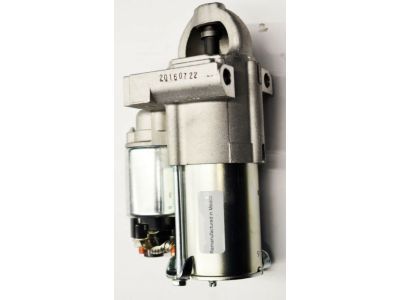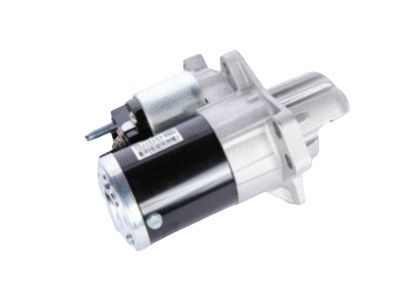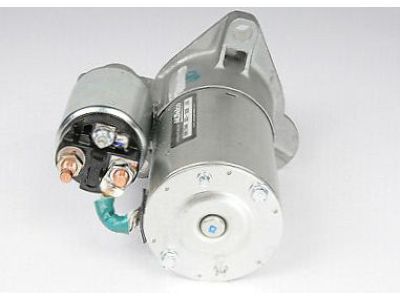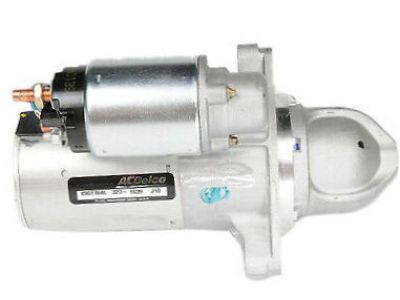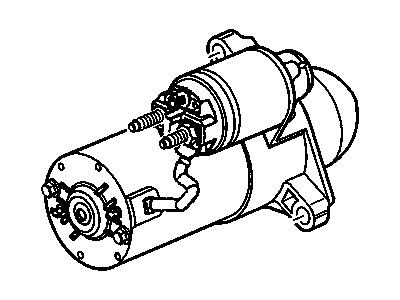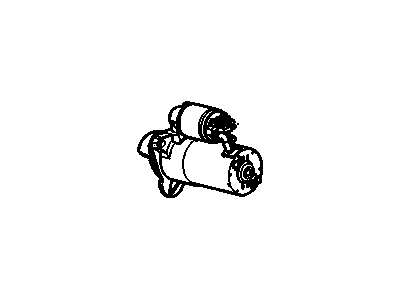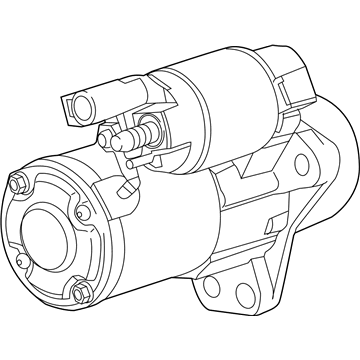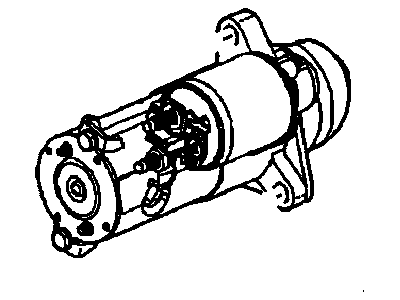
My Garage
My Account
Cart
Genuine GMC Canyon Starter
Starter Ignition- Select Vehicle by Model
- Select Vehicle by VIN
Select Vehicle by Model
orMake
Model
Year
Select Vehicle by VIN
For the most accurate results, select vehicle by your VIN (Vehicle Identification Number).
10 Starters found
GMC Canyon Starter Asm, (Remanufacture) (Pg260D)
Part Number: 19180529$237.27 MSRP: $471.14You Save: $233.87 (50%)Ships in 1-2 Business DaysGMC Canyon Starter Asm
Part Number: 12645298$212.92 MSRP: $401.72You Save: $188.80 (47%)Ships in 1-2 Business DaysGMC Canyon Starter Assembly, .
Part Number: 24588465$165.02 MSRP: $328.29You Save: $163.27 (50%)Ships in 1-2 Business DaysGMC Canyon Starter, (Remanufacture)
Part Number: 89017846$323.26 MSRP: $642.55You Save: $319.29 (50%)GMC Canyon Starter, (Remanufacture)
Part Number: 89017557$238.48 MSRP: $473.56You Save: $235.08 (50%)Ships in 1-2 Business DaysGMC Canyon Starter Asm
Part Number: 12674768$128.20 MSRP: $255.12You Save: $126.92 (50%)Ships in 1-2 Business DaysGMC Canyon Starter (Remanufacture)
Part Number: 19168039$266.90 MSRP: $530.18You Save: $263.28 (50%)Ships in 1-2 Business DaysGMC Canyon Starter Asm
Part Number: 12678752$203.70 MSRP: $405.28You Save: $201.58 (50%)Ships in 1-2 Business DaysGMC Canyon Starter Asm
Part Number: 12657797$151.92 MSRP: $294.06You Save: $142.14 (49%)Ships in 1-2 Business Days
GMC Canyon Starter
The GMC Canyon employs a starter, a precise component that combines electrical energy from the battery to mechanical energy that helps to start the engine. Starting begins when the ignition key is turned to the start position or is resistance started, the starter solenoid is energized by current passing through a heavy gauge wire connected to the battery. The solenoid then energises the starter motor and gears the starter drive with the flywheel / flex plate ring gear thus pulling or 'cranking' the engine. The starter also contains an armature that rotates, field coils or permanent magnets, and gearing mechanism to drive the motor for tackling the loads of the engine. For years, GMC Canyon starters have mainly kept to this electric starter design and have safety mechanism such as a neutral safety switch in automatic transmissions and a clutch switch in manual transmission to ensure that the engine does not start while in gear. Even though regular OE starters are very well-built, they can at times develop issues with high-compression engines that are commonly used in performance enhanced GMC Canyons; this means that one is likely to find that there are specialized starters that are better configured for tighter clearances and that are able to put up with more degrees of power. All in all, the GMC Canyon's starter is an important component that helps start the vehicle by butt-joining some mechanical parts in the engine by electrical system. For normal OE starters, standard production models will do but for modified or high performance GMC Canyons the engine compression and the corresponding power may necessitate a better OE starter.
Each OEM GMC Canyon Starter we offer is competitively priced and comes with the assurance of the manufacturer's warranty for the part. Furthermore, we guarantee the speedy delivery of your orders right to your doorstep. Our hassle-free return policy is also in place for your peace of mind.
GMC Canyon Starter Parts Questions & Experts Answers
- Q: How to troubleshoot and check a malfunction in the starting circuit and Starter on GMC Canyon?A:But don't just assume that the starter is guilty right away if you are troubleshooting a malfunction in the starting circuit. Instead, begin by inspecting several key components like; clean and securely connected Battery Cable clamps to battery. Check battery cables for damage and replace any damaged ones. If it fails any tests, evaluate its condition and change it. Inspect starter wiring and connections, and also check the tightness of starter mounting bolts. Examine relevant fuses in engine compartment fuse box, if they're blown, investigate the cause and repair the circuit. Evaluate the ignition switch circuit for correct operation. Verify that the underhood electrical center contains a properly functioning starter relay. Ensure this as well as Park/Neutral position switch functions correctly since these systems are important for applying battery voltage to the starter relay respectively at least during cranking. If no engagement occurs when turning the ignition switch to start then check for battery voltage at the starter solenoid. Attach a 12-volt test light or voltmeter to the starter solenoid terminal and have an assistant turn the ignition switch to start while monitoring the test light or voltmeter. It should burn brightly or show battery voltage there. Absence of voltage indicates checking fuses, ignition switch, starter relay and related wiring in starting system. If voltage is present but starter does not turn over remove starter from engine and bench test it for defects. Slow turning requires checking of cranking voltage at starter using volt meter from battery which should not drop below 8 volts with amperage draw not exceeding 350 amps over a 10-second crank period; anything above that can result in a failure of some elements associated with starting system requiring testing within service department. Finally, if nothing happens when power is applied to a particular device (in our case, the starter) but it is believed to be energized, this means that there are two possible problems with the solenoid or starter. Inspect whether the engine is seized by attempting to rotate the crankshaft pulley. If necessary, apply voltage to a bench mounted starter solenoid using a test battery and observe its operation including the pinion drive extending and rotating. From these observations decide whether the solenoid or starter is bad and if not, what may be wrong within the starter assembly.
